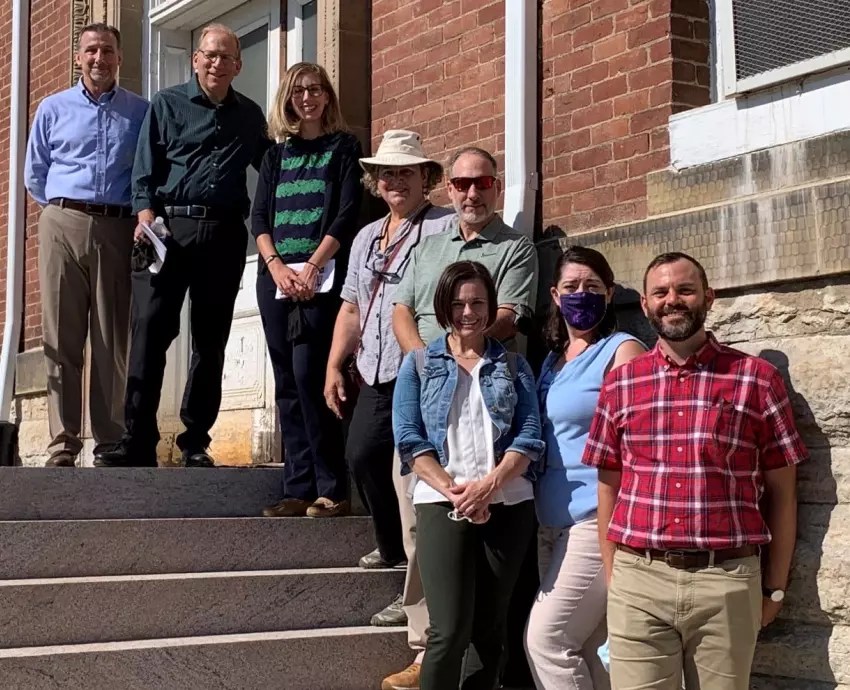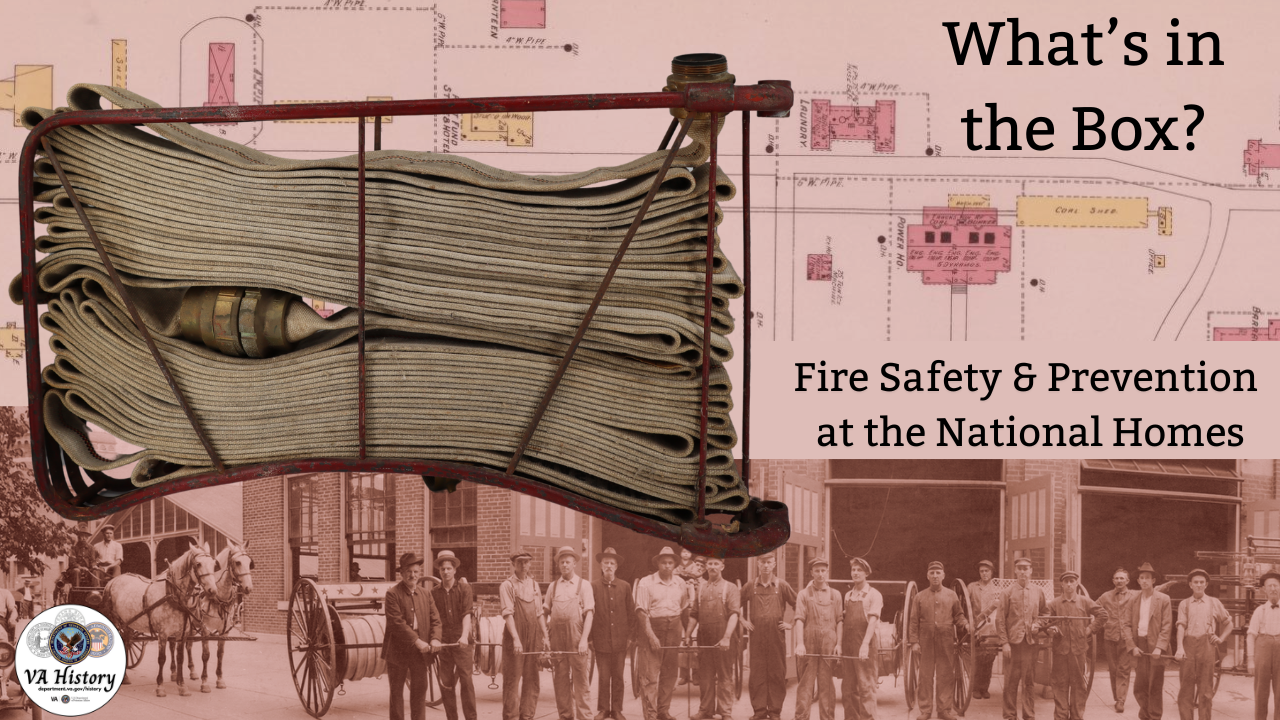
A key first step in developing a new museum is an Interpretive Master Plan (IMP) and a project team to create it. On June 9, 2021, a group of VA employees (historians representing each VA administration and others from the VA History Office team) met with the staff from the Smithsonian Exhibits program. The discussion involved the development of an IMP for the National VA History Center (NVAHC) under development on Dayton VA Medical Center campus. A Core Project Team (CPT) formed following that meeting, and they are now tasked with developing the IMP for the NVAHC. The IMP will establish how the NVAHC will serve the public and what role it will play in telling the VA story.
In August of 2021, the newly formed CPT met in Dayton, Ohio. That meeting provided an opportunity for the team members to get to know one another and establish effective working relationships that define an effective team. The Team toured the Dayton campus, including the two historic buildings that will comprise the core of the NVAHC. Building 116 (Old Headquarters) will serve as the museum and Building 129, the Clubhouse, will serve as the archival and collections center. The team developed a draft mission statement to guide the IMP development: tell the story of how the VA serves those who have served throughout the Nation’s history. They also worked on initial themes that define the exhibit sections and components.
“Gathering as a team on the future site of the National VA History Center at the Dayton VA Medical Center campus provided the grounding needed to start our work,” said Katie Delacenserie, Veterans Health Administration Historian. “The historic campus puts our purpose front and center and provided the focus needed in beginning to think about how we are going to tell the history of the VA.”
In December 2021 the Team reconvened in Dayton to further refine themes, define the functions the museum would provide, and continue strategic planning. Those brainstorming sessions resulted in lists of potential themes that each member will use to develop exhibit elements.
“The second meeting of the full VA History Team in Dayton built on the great progress made in our first meeting,” according to Historian Richard Hulver, a National Cemetery Administration Historian. “Together, the group mapped out the large themes that each Administration will want to tell and thought about overall cohesion of our story. We also spent time looking at the blank canvas that will be our museum and going out into the Dayton community to see how other historic buildings have been readapted for modern use.”
The CPT meets virtually on a weekly basis. It continues making significant progress outlining the themes and takeaway messages for the exhibits to be featured in the NVAHC. This is an important step to the development of the first VA museum. The museum is tentatively scheduled to open in 2026. Many other key milestones are still to come – from the IMP to opening the museum. We will keep you updated as we hit each milestone and this vision becomes a reality.
VA History Team – VA History Office
- Michael Visconage, Chief Historian
- Kurt Senn, Curator
- Robyn Rodgers, Senior Archivist.
- Sara Amy Leach, NCA Senior Historian
- Jeffrey Seiken, VBA Historian
- Katie Delacenserie, VHA Historian
- Richard Hulver, NCA Historian
By Kurt Senn
Curator, National VA History Center
Share this story
Related Stories

Curator Corner
The Story Behind the National Homes’ Seal
The National Home for Disabled Volunteer Soldiers turns 160 years old in 2025. The campuses are the oldest in the VA system, providing healthcare to Veterans to this day.
At the time of their establishment, they were the first of their type on this scale in the world. Within the NHDVS seal is the story that goes back 160 years ago.

Curator Corner
What’s in the Box? Fire Safety and Prevention at the National Homes
Fire safety may not be the first thing that comes to mind when thinking about Veteran care, but during the National Home for Disabled Volunteer Soldiers period (1865-1930), it was a critical concern. With campuses largely constructed of wooden-frame buildings, housing thousands of often elderly and disabled Veterans, the risk of fire was ever-present. Leaders of the National Homes were keenly aware of this danger, as reflected in their efforts to establish early fire safety protocols.
Throughout the late 19th century, the National Homes developed fire departments that were often staffed by Veteran residents, and the Central Branch in Dayton even had a steam fire engine. Maps from this era, produced by the Sanborn Map Company for fire insurance purposes, reveal detailed records of fire prevention equipment and strategies used at the Homes. These records provide us with a rare glimpse into evolving fire safety measures in the late 19th and early 20th Century, all part of a collective effort to ensure the well-being of the many Veterans living there.




